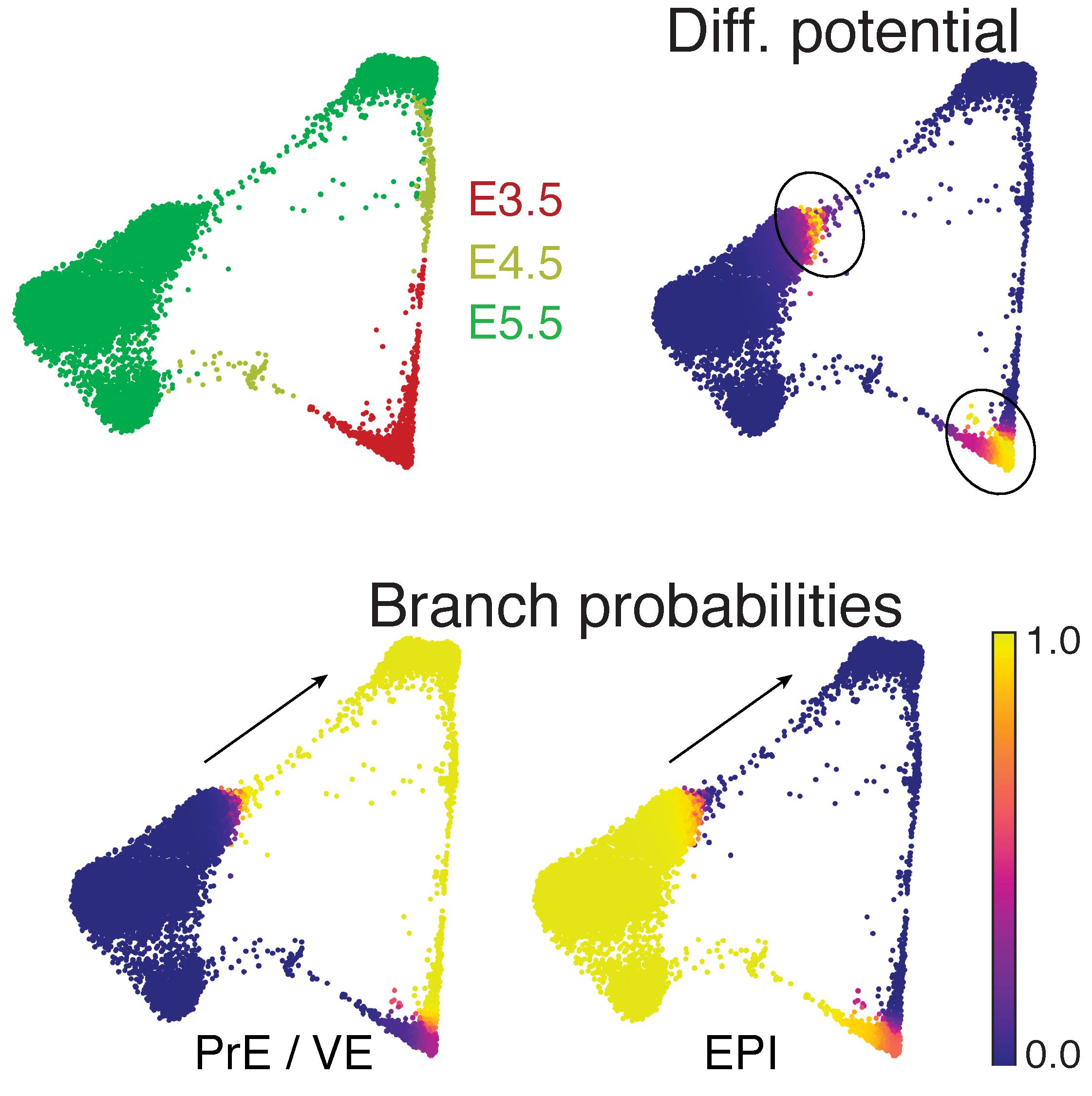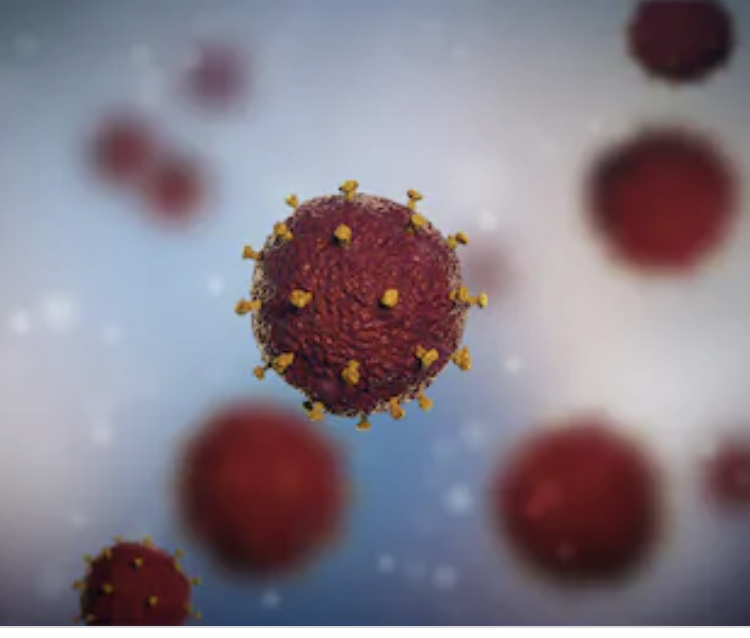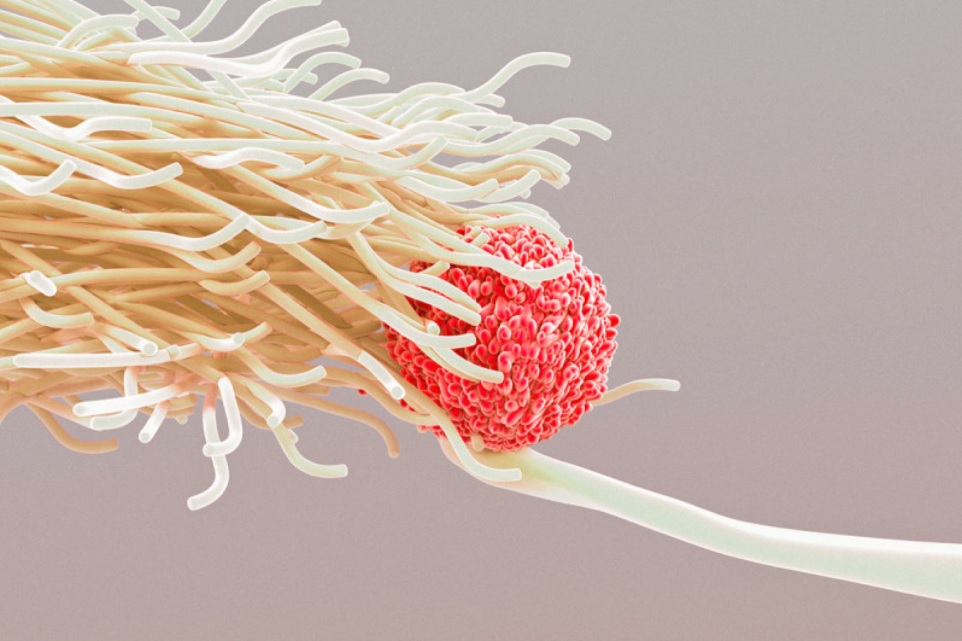The Single-Cell Analytics Innovation Lab (SAIL) has been involved in many projects in diverse areas, from basic research in developmental biology to investigations in tumor metastasis and immunotherapy. Here are few examples of SAIL projects.
Fine Maps of Endoderm Development

The endoderm, one of the first tissues to form in the mammalian embryo, gives rise to the entire pulmonary system and digestive tract. Despite its importance, it has not been well characterized. In collaboration with SAIL, researchers from the labs of Anna-Katerina Hadjantonakis and Dana Pe’er developed tissue-handling techniques to dissect fully intact gut tubes from mouse embryos and applied single-cell RNA sequencing.
The result is a roadmap of endodermal patterning that is unprecedented in its richness and resolution, allowing the researchers to computationally identify emerging cell types, order cells along a developmental sequence, pinpoint when cells choose between fates, and implicate specific genes in directing these critical developmental decisions. Their analysis also enabled an unsupervised depiction of “pseudospace” directly from the data — a reconstruction of the spatial ordering of cells that the investigators validated using in situ hybridization in intact embryos.
The work shows that cells are transcriptionally primed toward their future fate and position before spatial organization is evident. The researchers also rewrote our canonical understanding of development by detecting an unexpected, direct conversion of embryonic cells to extra-embryonic fates based on their position after migration. The data, analysis and new computational tools will aid efforts in regenerative medicine, and promise to reveal mechanisms that drive endodermal cancers, such as pancreatic, liver and lung cancer.
Increasing Vulnerability to Immunotherapy

Immunotherapy has rapidly become one of the most promising modes of cancer treatment, taking a prominent place alongside the three existing pillars of cancer therapy: surgery, chemotherapy, and radiotherapy. Priming the body’s immune system to fight tumor cells has proven to be a successful strategy for many cancers that were previously almost untreatable, such as certain B cell malignancies.
Unfortunately, immunotherapies are not yet effective for many forms of cancer and for many people with these cancers. Multiple projects at SAIL are now using the power of single-cell sequencing to learn why immunotherapies fail or succeed.
These projects focus on deciphering the mechanisms that the immune system uses to recognize and attack cancer cells. The projects compare tumors that respond to immunotherapy and those that don’t to learn how these therapies stop working when cancers develop resistance.
The single-cell approach also makes it possible to see exactly which immune cell types exist in a tumor; so-called “hot,” or immune-infiltrated, tumors are more susceptible to immunotherapy. This approach also may allow us to advance treatments that can convert “cold” tumors into hot ones. SAIL projects are working on strategies and combination treatments that aim to make immunotherapy more effective and broadly applicable.
The Human Tumor Atlas

The Human Tumor Atlas Network (HTAN), part of the National Cancer Institute’s Cancer Moonshot initiative, was initiated in 2018 with the goal of generating three-dimensional molecular and cellular tumor atlases of key transitions in cancer. Dana Pe’er and Christine Iacobuzio-Donahue co-lead a center at MSK that focuses on understanding the transition from local to metastatic disease in pancreatic and lung cancers. It is one of only 11 HTAN centers across the country.
MSK’s HTAN center relies on SAIL to develop novel protocols for the handling, banking, and single-cell sequencing of challenging clinical tissue that’s generated from biopsies and resections, as well as rapid autopsy tissue from the Last Wish Program. A major goal of our center is to identify shared bottlenecks that tumor cells must overcome to colonize distant tissues. We hope this will help us to identify therapeutic opportunities for blocking metastatic routes. SAIL has already generated substantial data from biospecimen samples, with a special emphasis on metastasis to the brain.
New Classes of Immune Cells
